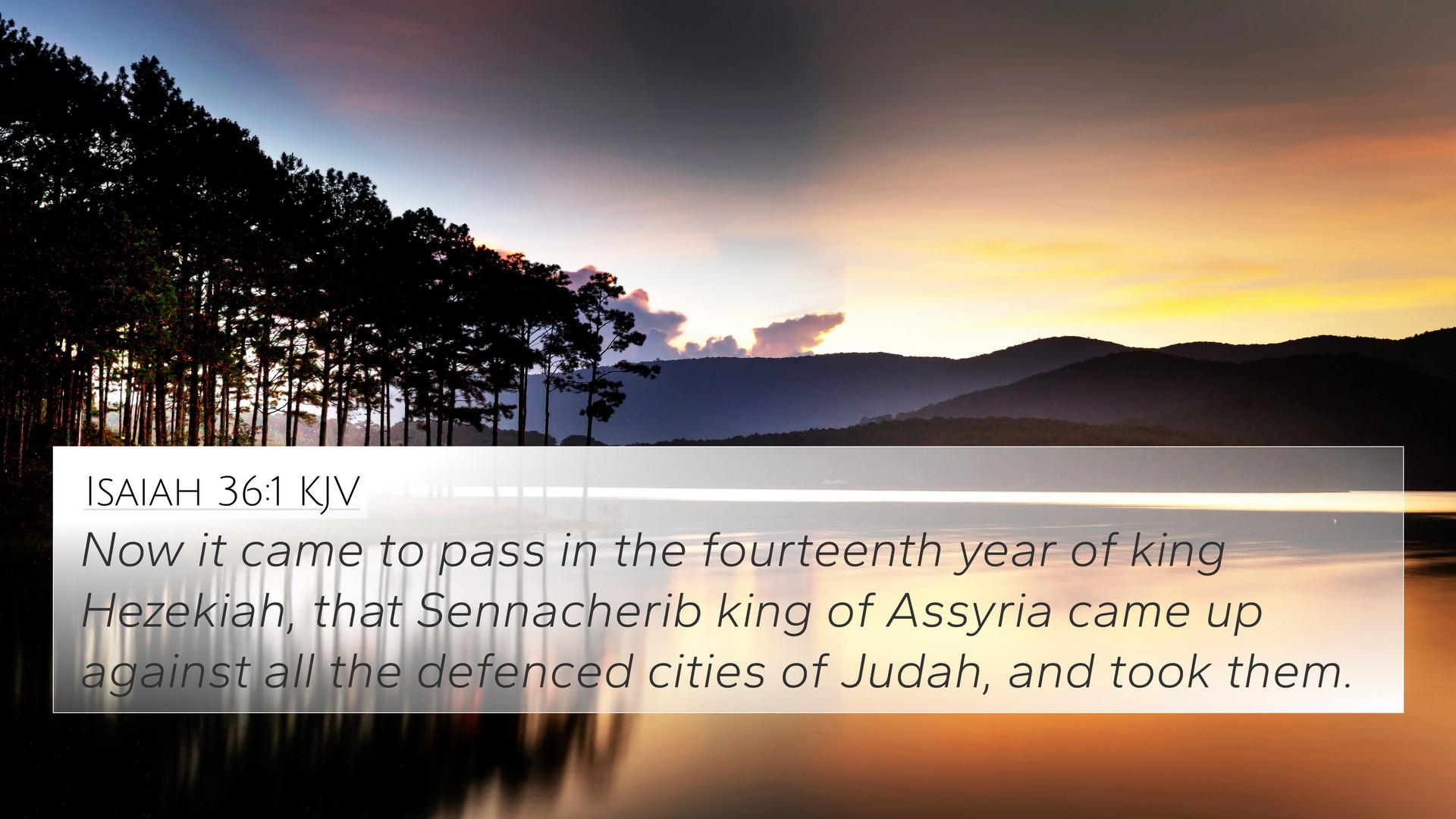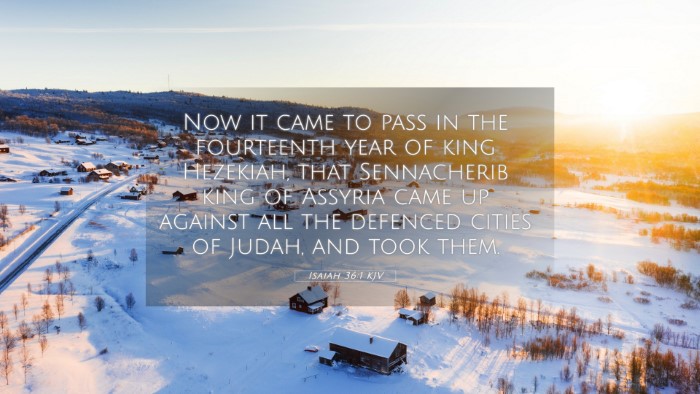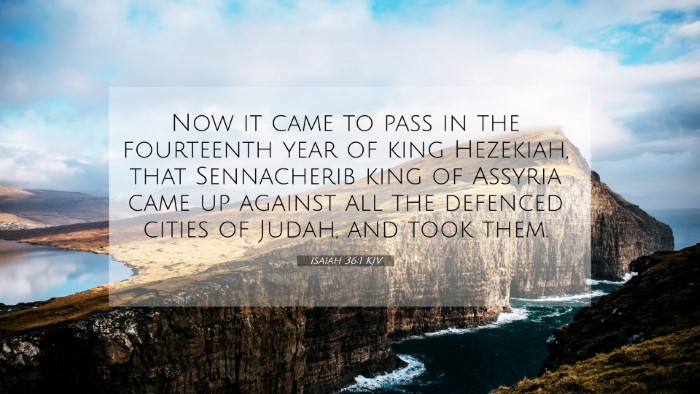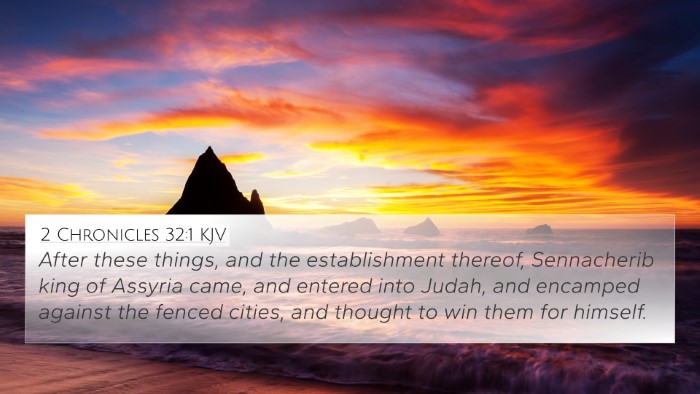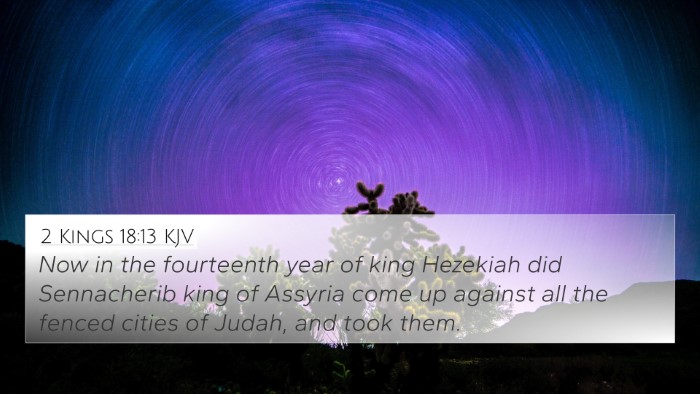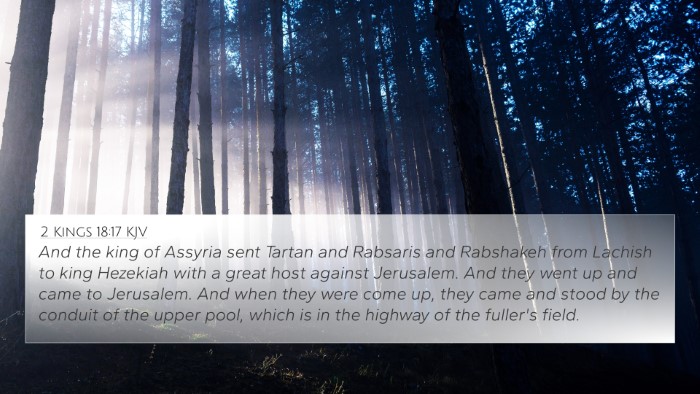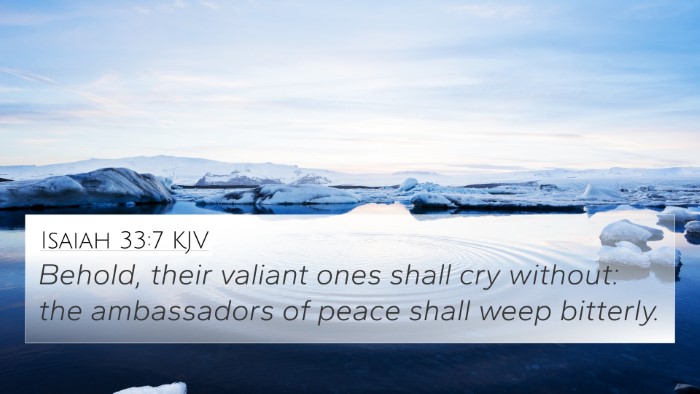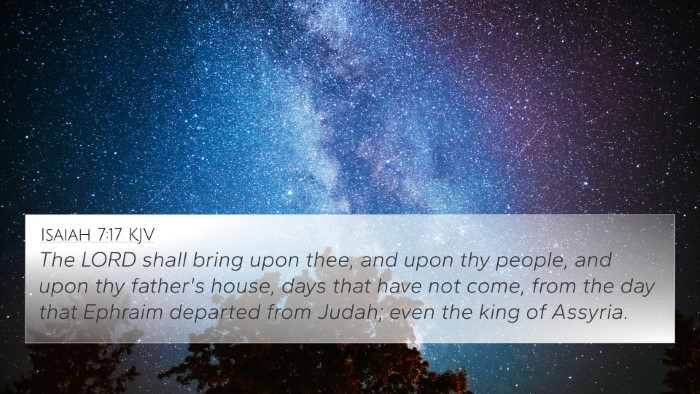Understanding Isaiah 36:1
Isaiah 36:1 presents a pivotal moment in the narrative of the prophet Isaiah, detailing the siege of Jerusalem by the Assyrian king Sennacherib. This verse sets the stage for the theological and historical themes that permeate the book of Isaiah.
Verse Text
“Now it came to pass in the fourteenth year of King Hezekiah, that Sennacherib king of Assyria came up against all the fenced cities of Judah, and took them.” (Isaiah 36:1)
Commentary Insights
This verse indicates the political and military turmoil faced by Israel during the reign of King Hezekiah. The siege represented not only a physical threat but also a profound spiritual test of faith for the people of Judah.
- Historical Context: According to Matthew Henry, the Assyrian invasion is a fulfillment of prophetic warnings and reflects the consequences of Israel's alliances and disobedience.
- Military Threat: Albert Barnes emphasizes the magnitude of the threat posed by Sennacherib, noting that he had already conquered other cities in Judah before this siege.
- Spiritual Implications: Adam Clarke highlights the spiritual implications of this siege, suggesting it represents the trials faced by the faithful when under siege by external forces.
Thematic Connections
This verse introduces several key themes which are explored throughout Isaiah, including faith, the sovereignty of God, and the impending judgment on nations. The events surrounding this siege are significant in understanding the dynamics between divine providence and human agency.
Connecting Scriptures
To better grasp the meaning of Isaiah 36:1, consider these cross-references:
- 2 Kings 18:13-16 – Provides a parallel account of the Assyrian siege.
- Isaiah 7:1-2 – Introduces the fear and uncertainty in Judah leading up to this event.
- Isaiah 10:5-6 – Discusses Assyria as a tool of God's judgment.
- Isaiah 30:1-3 – Warns against reliance on Egypt for help instead of trusting in God.
- 2 Chronicles 32:1-8 – Offers additional details about Hezekiah's response to the invasion.
- Isaiah 37:36-37 – Describes the divine intervention that saves Jerusalem.
- Psalm 46:1-2 – Encourages trust in God as a refuge and strength, which resonates with Hezekiah’s reliance on God amidst siege.
Practical Applications
Isaiah 36:1 serves as a reminder of the sovereignty of God over nations and the importance of faith in times of crisis. For believers, the narrative underscores the need for reliance on divine strength rather than human power.
Tools for Bible Cross-Referencing
To study Isaiah 36:1 and its connections further, the following resources may be helpful:
- Bible Concordance: A tool for locating verses and their references.
- Cross-Reference Bible Study Guides: These help in identifying links between scriptures.
- Bible Reference Resources: Comprehensive resources for deeper biblical understanding.
Understanding Inter-Biblical Dialogue
The connections between this verse and others throughout Scripture illustrate the concept of inter-Biblical dialogue, where themes and lessons are reinforced across various books. This practice enriches the reader's understanding of Biblical narratives and their applications to faith and life.
Conclusion
Isaiah 36:1 encapsulates a moment of profound crisis for Judah and sets the stage for a display of God’s sovereignty and power. Engaging deeply with this text and its surrounding verses allows for a comprehensive understanding of both historical context and spiritual significance.
